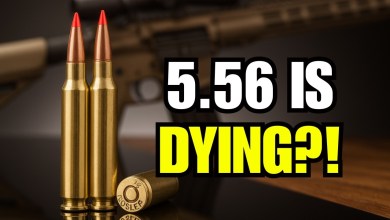No Crinkle, Extra Cushion: Sea to Summit Pursuit Self-Inflating Sleeping Pad Review

I’ve been on a journey searching for the right backpacking sleeping pad. I’ve slept on minimalist mats that are barely more than a thin layer of insulation against the cold ground. Others have been plush and comfortable, but they required a lot of personal lung power to fill up.
Some were leaky and reliably deflated on me. A few were so loud, I’d wake up nearly every time I moved.
But this spring, I got a chance to try the Sea to Summit Pursuit sleeping pad, and my search has stalled out. It’s the brand’s first self-inflating sleeping pad, using “horizontal delta coring” to reduce weight and improve comfort.
The pad is damn near dead silent. It isn’t the smallest or lightest pad ever made, but it’s a hardy piece of three-season backpacking gear.
I’ve been using this pad all spring and through the beginning of summer. It’s been with me car camping and backpacking. I even used it in lieu of a pull-out couch at a friend’s house. The Pursuit has become an integral part of my sleeping-without-a-mattress setup — at least, for three seasons out of four.
In short: The Sea to Summit Pursuit Self-Inflating Sleeping Pad ($139) is designed for backpacking, trekking, and paddle touring. It’s comfortable, durable, and doesn’t make a lot of noise. With an R-value of 3, it’s a solid three-season backpacking sleeping pad. It’s a little on the heavy side and packs down to about the size of a football. But for backpackers who value comfort over pack weight, the Pursuit offers a great night’s sleep.
Compare the Sea to Summit Pursuit Sleeping Pad to others on GearJunkie’s guide to the Best Backpacking Sleeping Pads.
-
Comfortable -
Quiet -
Self-inflating -
Durable
-
Only self inflates to ~65-75% -
Doesn’t pack away very small -
Is on heavy end for backpacking sleeping pads
Sea to Summit Pursuit Backpacking Sleeping Pad Review
Self-Inflating ‘EXPEL Valve’
If I’m being honest, I’ve never had much luck with “self-inflating” sleeping pads. In my experience, they usually fill up to 50-75%, and the rest relies on my lung power. That’s better than having to inflate the entire thing myself, but it nevertheless made me skeptical of brands that lean on the term for marketing.
Sea to Summit’s products are some of my favorites, though. So when I saw the brand was launching its first self-inflating sleeping pad, I was hopeful.
The Pursuit uses a patent-pending “XPEL Valve” that combines one-way inflation and one-way deflation in a single valve. To self-inflate, supposedly just open the valve completely and leave the mat to do its thing.
If you are manually inflating or using an air pump (like the Sea to Summit Airstream), you can set the valve to one-way inflate mode. When you’re rolling it up, flip the valve over, and it becomes a one-way deflate valve. More on this later.
Horizontal Coring
When you inflate the Pursuit, you’ll notice a series of horizontal ribs running the length of the pad. Those are the horizontal cores, where Sea to Summit removed foam to reduce the pad’s weight and improve packability.
The brand claims these reduce the amount of foam used in the pad by 40%. The air-filled cores also allegedly make the pad more comfortable.
Three Seasons
The Pursuit Sleeping Pad has an R value of 3. That’s great for late spring, summer, and early fall backpacking.
If you want to use your sleeping pad for colder adventures, I’d recommend looking for something on GearJunkie’s guide to the Best Backpacking Sleeping Pads that has an R value higher than 4.
Sustainable Design & Materials
The Pursuit is made with recycled fabric, is Bluesign-approved (meaning it creates minimal carbon in production), and is solution-dyed to save water, energy, and carbon emissions. As far as carbon footprints go, this sleeping pad has a pretty small one.
In the Field: Sea to Summit Pursuit Sleeping Pad
Packability
I took this sleeping pad on two different backpacking trips, both of which were pretty tight on pack space. The Pursuit fit in my backpack, but it definitely took up its fair share of room.
With a packed size of 5.5 x 11.4 inches, there are definitely sleeping pads in this class that pack down smaller.
I had to be very mindful when deflating the pad to roll it up as tightly as I possibly could to save space. Still, even fully deflated, the pad is about as big as a football.
Weight
Sea to Summit said the Pursuit is the “lightest sleeping pad in its class.” However, compared to other pads on GearJunkie’s guide to the Best Backpacking Sleeping Pads, this one is on the heavier end of the spectrum.
The Large Mummy version I had weighs 1 pound, 9.7 ounces. That would be the second-heaviest sleeping pad on the list (with the third-lowest R value).
I’m not an ultralight backpacker, so the Pursuit’s weight didn’t bother me on the trail. The beers, cheese, and summer sausage I packed were more of a burden to carry. But if you’re a gram counter who wants the lowest-weight gear possible, I would encourage you to look elsewhere.
Comfort
I’ve been very pleased with how comfortable this pad is. Many minimalist pads tend to be less than plush, but Sea to Summit’s horizontal coring seemed to notably improve this pad’s overall comfort. It added an adequate amount of squish so that its 2-inch inflated width felt loftier than it was.
I slept well on the Pursuit. Even on days three and four of camping trips, I wasn’t as stiff and sore from sleeping on the ground as I’ve been with other pads.
It’s also about as quiet as sleeping pads can be. I’ve used some really loud pads that wrinkle like trash bags at the slightest movement. I’m not a light sleeper, but that will wake me up. I didn’t have that experience at all with the Pursuit sleeping pad.
Durability
Like most of Sea to Summit’s equipment, the Pursuit Sleeping Pad is really well made. The edges are seamlessly fused, the materials are high quality, and the valve seals completely without leaking. I’ve not had a single issue with this pad losing air overnight yet.
It has survived dogs walking on it, people changing clothes on it, bags being tossed atop it, and a lot of other general camp abuse.
This is one of Pursuit’s greatest qualities, in my opinion. You don’t have to baby this sleeping pad. And if I ever do spring a leak, it comes with a Sea to Summit patch kit so I can fix the problem on the go.
Room for Improvement: Sea to Summit Pursuit Sleeping Pad
My experience with the Pursuit’s “self-inflating” valve was the same as I’ve had with other similarly marketed sleeping pads. It’s cool that you can flip the valve over and switch between one-way inflate and one-way deflate. But the Pursuit would only self-inflate to about 65-75%. In testing, I left it alone for an hour, and still had to top it with five lungfuls of breath.
One other issue came from another editor’s testing. While the single valve eliminates some weight, there’s a catch to deflating. You have to fully open the valve and flip it over to “deflate” mode. Then when done, you have to open it again and flip it back to “inflate” mode to close the cap.
This means you have to keep the pad pressed down after deflating. This hasn’t been a serious frustration, but it is something you have to pay extra attention to when packing it up. Honestly, you can deflate it by just opening the valve and pressing air out the old-fashioned way.
The self-inflation portion saves a little work over inflation stuff sacks, but it’s not full self-inflation. I’m being a little bit nitpicky here, but I feel like it would be more honest if Sea to Summit (and any other brand that makes “self-inflating” sleeping pads) would use the modifier “partially self-inflating.”
For a pad this heavy, I’d also love it if the Pursuit’s R-value were higher. I tend to camp in cold environments and seasons, so I’m a fan of four-season pads. There are several that weigh less than this one does on our guide to the Best Backpacking Sleeping Pads.
I wish the weight-to-R-value ratio on this pad were a little higher. But for anyone who camps mostly three seasons a year, this pad is still a great option.
Finally, I found that my Pursuit stained kind of easily. Obviously, this isn’t a deal breaker by any means. It has no effect on the pad’s function or performance. But it’s something to keep in mind. After several months of regular use, mine has a number of stains on it, and I can’t pinpoint when or how they got there.
Sea to Summit Pursuit Self-Inflating Sleeping Pad: Who Is It For?
If you’re looking for a sleeping pad that works well for car camping and is great for backpacking, the Pursuit should be at the top of your list. It’s one of the more comfortable backpacking sleeping pads I’ve used; it’s very well made, durable, and relatively easy to inflate.
It isn’t the lightest or most packable sleeping pad on the market, but it makes up for that with its other qualities.
I’ve been really pleased with this pad so far this summer. It’s survived some hard use and numerous adventures in the desert and mountains where I’ve been camping. Thus far, it’s holding up as well as the day it arrived in the mail.
As summer shifts into fall and creeps toward winter, I’ll probably stop using this pad in favor of one with a higher R-value. But I’ll be sad to put the Pursuit away for the winter. It’s really grown on me.
Read the full article here








